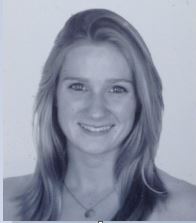 Matthew R. Kumjian
Matthew R. Kumjian
Matt is an Associate Professor in the Department of Meteorology at Penn State University, where he has been since January 2014. So far at Penn State he has taught undergraduate and graduate courses in Radar Meteorology, Atmospheric Chemistry and Cloud Physics, Mesoscale Meteorology, Snow and Ice Physics, Aerosol-Cloud-Precipitation Interactions, and Precipitation Physics. Prior to his arrival to Happy Valley, Matt was an Advanced Study Program Postdoctoral Research Fellow at the National Center for Atmospheric Research in Boulder, Colorado. He received his B.S., M.S., and Ph.D. in meteorology from the University of Oklahoma (2006, 2008, and 2012, respectively).
Matt and his research group at PSU use dual-polarization radar observations and numerical models to study precipitation physics. He is interested in better understanding microphysical structures and processes in a variety of high-impact weather events, including hailstorms, tornadic storms, and winter storms, and how the microphysics affects the storm’s behavior and evolution. Ultimately, this will lead to an improvement in the way we parameterize these processes in numerical weather prediction models. Matt recently won an American Meteorological Society award for his contributions to advancing our understanding of precipitation physics using novel applications of dual-polarization radar.
Outside of academia, Matt is the principal violist in the Nittany Valley Symphony Orchestra. He also enjoys listening to classical music and attending performances by some of the region’s premiere orchestras. When possible, he likes to travel, especially to explore restaurants, exotic foods, and craft beer. He lives in State College with his wife Kelly and step-daughter Emily.
Yuzhu Lin

Yuzhu received her Bachelor of Science degree in Atmospheric Sciences from Nanjing University, Nanjing, China in 2019. Her graduate thesis was on the impacts of inertial oscillations on Tibetan Plateau precipitation. She’s currently working with Dr. Kumjian on an NSF-funded PRE-EVENTS grant aimed at improving hail event forecasts. She will do this by using hailstone growth trajectory calculations and numerical simulations of supercell storms to explore environmental controls on hail size*. Her research interests include mesoscale meteorology, severe weather, and numerical modeling. She’s excited about projects that are practical and can make people safer in severe weather.
*Lin, Y., and M. R. Kumjian, 2022: Influences of CAPE on hail production in simulated supercell storms. Journal of the Atmospheric Sciences, 79, 179-204. pdf
Sara Wugofski

Sara received her Bachelor of Science degree in Meteorology at Florida State University in 2017 and her Master of Science degree in Meteorology at the University of Oklahoma in 2019. While at OU, she studied the extreme rainfall associated with a flash pluvial event in the Southern Great Plains in May 2015. Currently, she is pursuing her Ph.D. under Dr. Kumjian, working on a project that is focused on developing a new ice microphysics parameterization, constrained by polarimetric radar observations. This work is based data from Ka-band radars located in the arctic. Her research interests include radar meteorology and cloud microphysics.
Nicholas Norman

Nick is pursuing his Master of Science degree in Meteorology at the Pennsylvania State University. He received his B.S. from Penn State in winter 2020, and started in the RADAR group in January of 2021. Nick is currently working with Dr. Kumjian analyzing storms that produced reports of 2-inch (5-cm) or larger hail in the northeastern United States. The goal is to find similarities in dual-polarization signatures between the cases, along with the environments in which they occurred, to more accurately predict large and damaging hail events in this region in the future. Nick’s research interests include applications of dual-polarization radar observations, mesoscale meteorology, and hail. He is very excited to explore instances of large hail in atypical locations.
Katie McKeown

Katie received her B.S. in Atmospheric and Oceanic Sciences from Stony Brook University in 2019. While there, she researched radar observations of tornado dissipation. She then obtained her M.S. in Earth Science from UNC Charlotte in 2021. Her thesis focused on radar characteristics of observed supercell thunderstorms interacting with complex terrain. Her primary research interests are radar meteorology, severe weather, and the impacts of severe weather on society.
McKeown, K. E., M. M. Frech, K. S. Tuftedal, D. M. Kingfield, H. B. Bluestein, D. W. Reif, and Z. B. Wienhoff, 2020: Rapid-scan and polarimetric radar observations of the dissipation of a violent tornado on 9 May 2016 near Sulphur, Oklahoma. Monthly Weather Review, 148, 3951-3971. pdf
Anna VanAlstine
 Anna is a part-time student pursuing her second Penn State Bachelor of Science degree in Meteorology and Atmospheric Science while working as a Financial Assistant for the Astronomy and Astrophysics Department at Penn State. Her undergraduate research under Dr. Kumjian focuses on three body scattering signatures (TBSS) seen on weather radar and the possibility of gauging terminal velocity, sizing, and composition of hydrometeors causing such TBSS. Her research interests include atmospheric radiative transfer, atmospheric physics, and remote sensing data processing and assimilation.
Anna is a part-time student pursuing her second Penn State Bachelor of Science degree in Meteorology and Atmospheric Science while working as a Financial Assistant for the Astronomy and Astrophysics Department at Penn State. Her undergraduate research under Dr. Kumjian focuses on three body scattering signatures (TBSS) seen on weather radar and the possibility of gauging terminal velocity, sizing, and composition of hydrometeors causing such TBSS. Her research interests include atmospheric radiative transfer, atmospheric physics, and remote sensing data processing and assimilation.
Song Zhang

Song received her Bachelor of Science degree in Atmospheric Sciences at the University of Illinois, Urbana Champaign in 2021. During her senior year at UIUC, she participated in the NASA-funded Investigation of Microphysics and Precipitation for Atlantic Coast-Threatening Snowstorms (IMPACTS) project, which studies snow band formation within Northeast and Midwest winter storms. She worked on an analysis of multi-wavelength radar data and microphysics data collected by the NASA ER-2 and P3 aircrafts to understand the precipitation structure and microphysical characteristics of snow particles. At PSU, she is now working with Dr. Kumjian and Dr. Greybush on the IMPACTS project for her Ph.D. degree. She will be focusing on the dual-polarization radar observations accompanied with the results from data assimilation. Song’s research interests include radar meteorology and cloud microphysics. She is looking forward to a perfect Nor’easter in the near future.
Brady Stouffer
Lydia Spychalla
Lydia received her Bachelor’s degree in physics from the University of Illinois at Urbana-Champaign. In her undergrad research opportunities, she studied machine learning methods for forecasting hail and numerical models of supercell storms. Her work with Dr. Kumjian combines her research interests of numerical modeling and cloud microphysics in a project where she will be studying the growth of hail in simulated storms. Outside of work, Lydia loves spending time outdoors, drinking lattes, and doing jigsaw puzzles.
ALUMNI
Lyn Comer

Lyn earned her B.S. in Atmospheric Science and her B.A. in Applied Mathematics from the University of North Carolina at Asheville in 2021. During her undergraduate years she was a William M. Lapenta intern for the NOAA NWS Weather Prediction Center where she worked on verifying the Excessive Rainfall Outlook product to help provide insights that could improve extreme rain event forecasting. She also conducted personal study on hailstone diameter size and precipitable water amounts. Lyn worked with Dr. Stensrud and Dr. Kumjian to study the convective boundary layer height using WSR-88D radars with the goal of benefitting weather and air pollution forecasting, and successfully defended her M.S. Thesis in Summer 2023.
Karl Schneider

Karl graduated with a B.S. in Meteorology and Atmospheric Science from Penn State in 2020. For his honors thesis, Karl helped develop the Penn State ReForecast Simulator <link: climate.met.psu.edu/reforecast>, a new forecaster training tool now used in weather forecasting courses at Penn State. Karl’s research interests include operational meteorology and forecasting, winter weather, and education, so it is no surprise that his M.S. work focused on developing a better understanding of snow squalls in the northeastern US. Karl successfully defended his M.S. Thesis in Summer 2023. Outside of meteorology, Karl’s interests and hobbies include skiing, home snowmaking, and playing softball.
Karly Reimel

Karly Reimel
Karly received her Bachelor of Science degree in Meteorology at Florida State University in 2015 and her Master of Science degree in atmospheric science at Colorado State University in 2017. While at CSU, she studied the relationship between total lightning and the dynamics that lead to tornadogenesis. She also assisted in calibration/validation studies of the Geostationary Lightning Mapper. She received her Ph.D. under Dr. Kumjian, working on a DOE-funded project focused on a new rain microphysical parameterization scheme that is constrained by polarimetric radar observations*. Her research interests include radar meteorology, cloud microphysics, lightning, and severe convective storms. Karly currently works for a private company in Florida.
*Reimel, K. J., and M. R. Kumjian, 2021: Evaluation of KDP estimation algorithm performance in rain using a known-truth framework. Journal of Atmospheric and Oceanic Technology, 38, 587-605. pdf
van Lier-Walqui, M., H. Morrison, M. R. Kumjian, K. J. Reimel*, O. P. Prat, S. Lunderman, and M. Morzfeld, 2020: A Bayesian approach for statistical-physical bulk parameterization of rain microphysics. Part II: Idealized Markov chain Monte Carlo experiments. Journal of the Atmospheric Sciences, 77, 1043-1064. pdf
Morrison, H., M. van Lier-Walqui, A. Fridlind, W. Grabowski, J. Y. Harrington, C. Hoose, A. Korolev, M. R. Kumjian, J. Milbrandt, H. Pawlowska, D. Posselt, O. P. Prat, K. J. Reimel*, S.-I. Shima, B. van Diedenhoven, and L. Xue, 2020: Confronting the challenge of modeling cloud and precipitation microphysics. Journal of Advances in Modeling Earth Systems, 12(8), e2019MS001689. pdf
Ph.D. Dissertation: Leveraging Polarimetric Radar Observations to Learn About Rain Microphysics: An Exploration of Parameter Estimation, Uncertainty Quantification, and Observational Information Content with BOSS. 186 pp.
Scott Loeffler
Scott received his Bachelor of Science Engineering degree in Earth Systems Science Engineering from the University of Michigan in May 2015, and his Master of Science degree at Penn State in Summer 2017. He completed his Ph.D. in Summer 2021, studying the impacts of different environments and storm internal dynamics on dual-pol radar size sorting signatures. His research interests are focused in severe convective storms and the applications to operational meteorology in order to improve warning techniques*. His hope is to be involved in work that can be applied to keeping people safer in times of severe weather. He currently is a Lecturer at SUNY Oneonta.
M. S. Thesis: Dual-polarization Signatures in Nonsupercell Tornadic Storms. 44 pp.
Ph.D Dissertation: An Assessment of Polarimetric Radar Signatures Associated with Hydrometeor Size Sorting in Convective Storms. 121 pp.
*Loeffler, S.D., and M. R. Kumjian, 2018: Quantifying the separation of enhanced ZDR and KDP regions in nonsupercell tornadic storms. Weather and Forecasting, 33, 1143-1157.
*Loeffler, S. D., M. R. Kumjian, M. Jurewicz, and M. M. Frech, 2020: Differentiating between tornadic and nontornadic supercells using polarimetric radar signatures of hydrometeor size sorting. Geophysical Research Letters, 47(12), e2020GL088242. pdf
*Loeffler, S. D., and M. R. Kumjian, 2020: Idealized model simulations to determine impacts of storm-relative winds on differential reflectivity and specific differential phase fields. Journal of Geophysical Research – Atmospheres, 125, e2020JD033870. pdf
Kumjian, M.R., K. A. Lombardo, and S. D. Loeffler, 2021: The evolution of hail production in simulated supercell storms. Journal of the Atmospheric Sciences, in press.
Segall, J. H., M. M. Frech, D. M. Kingfield, S. D. Loeffler, and M. R. Kumjian, 2021: Storm-scale polarimetric radar signatures associated with tornado dissipation in supercells. Weather and Forecasting, conditionally accepted.
Dr. Dana Tobin

Dana Tobin
Dana received her Bachelor of Science degree in meteorology from The Pennsylvania State University in 2014, her Master of Science degree in 2016, and her Ph.D in 2020. Her research interests include utilizing polarimetric radar to investigate precipitation and other meteorological phenomena. She completed her M.S. degree working with Dr. Kumjian on analyzing the microphysical characteristics of winter precipitation transitions* and developing forecasting techniques for precipitation transitions using the polarimetric refreezing signature**. Her Ph.D. looked more broadly at winter transitional precipitation from societal***, operational**, and scientific* perspectives. In addition, she has been working on the impacts of winter precipitation on traffic accidents***. She is now the Peter Lamb Postdoctoral Fellow at the Cooperative Institute for Mesoscale Meteorological Studies in Norman, OK. Check out her website here.
*Van Den Broeke, M. S., D. M. Tobin, and M. R. Kumjian, 2016: Polarimetric radar observations of precipitation type and rate from the 2-3 March 2014 winter storm in Oklahoma and Arkansas. Weather and Forecasting, 31, 1179-1196. pdf
**Tobin, D. M., and M. R. Kumjian, 2017: Polarimetric radar and surface-based precipitation type observations of ice pellet to freezing rain transitions. Weather and Forecasting, 32, 2065-2082. pdf
***Tobin, D. M., M. R. Kumjian, and A. W. Black, 2019: Characteristics of recent vehicle-related fatalities during active precipitation in the United States. Weather, Climate, and Society, 11, 935-952. pdf
*Kumjian, M.R., D. M. Tobin, M. Oue, and P. Kollias, 2020: Microphysical insights into ice pellet formation revealed by fully polarimetric Ka-band Doppler radar. Journal of Applied Meteorology and Climatology, 59, 1557-1580. pdf
***Tobin, D. M., M.R. Kumjian, and A. W. Black, 2020: Effects of precipitation type on crash relative risk estimates in Kansas. Accident Analysis and Prevention, 151, 105946. pdf
*Tobin, D. M., and M. R. Kumjian, 2021: Microphysical and polarimetric radar modeling of hydrometeor refreezing. Journal of the Atmospheric Sciences, 78, 1965-1981. pdf
M. S. Thesis: Polarimetric and Thermodynamic Observations of Hydrometeor Refreezing. 107 pp.
Ph.D. Dissertation: A Multifaceted View of Winter Precipitation: Societal Impacts, Polarimetric Radar Detection, and Microphysical Modeling of Transitional Winter Precipitation, 298 pp.
Laura Shedd

Laura Shedd
Laura received her Bachelor of Science degree in Meteorology and Atmospheric Science at Penn State in May 2020. She worked with Dr. Kumjian on analyzing the shapes of hailstones that were measured during the IBHS Hail Field Project*. Her current research interests include radar and mesoscale meteorology, specifically with hailstorms. She is currently pursuing her Master of Science degree at the University of Oklahoma.
*Shedd, L. C., M. R. Kumjian, I. Giammanco, T. Brown-Giammanco, and B. R. Maiden, 2021: Hailstone shapes. Journal of the Atmospheric Sciences, 78, 639-652. pdf
Rachel Gutierrez

Rachel Gutierrez
Rachel received her Bachelor of Science degree in Atmospheric Science from the University of Illinois in 2017. She successfully defended her M.S. Thesis in Fall 2019, working with Dr. Kumjian on understanding the environments and radar characteristics of extremely large (>6″ in maximum dimension) hail*. In Fall 2018, she participated in the NSF-funded RELAMPAGO field project, taking dual-polarization radar observations of prolific hail-producing storms in Argentina to better understand hail processes. Her research interests include cloud physics, radar, severe storms, and emergency management. She now works for the National Weather Service in State College, PA.
*Gutierrez, R. E., and M. R. Kumjian, 2021: Environmental and radar characteristics of gargantuan hail-producing storms. Monthly Weather Review, conditionally accepted.
M.S. Thesis: Environmental and Radar Characteristics of Gargantuan Hail-Producing Storms, 58 pp.
John Banghoff

John Banghoff
John received his Bachelor of Science degree in Atmospheric Sciences from The Ohio State University in December 2015 and is currently working toward his Master of Science degree at Penn State. While working at the NWS office in Atlanta, GA, as a Hollings Scholar, he conducted research relating tornado debris signature characteristics to tornado intensity. John is interested in operationally significant research related to radar and convective initiation. He completed his M.S. Thesis in Spring 2019, working on a project* with Drs. David Stensrud and Matt Kumjian that seeks to create a horizontal convective roll climatology and automate their detection using WSR-88D radars. John currently is an employee at the National Weather Service in State College, PA.
*Banghoff, J., D. J. Stensrud, and M. R. Kumjian, 2018: Convective boundary layer depth estimation from S-band dual-polarization radar. Journal of Atmospheric and Oceanic Technology, 35, 1723-1733.
*Banghoff, J., J. Sorber, D. Stensrud, G. Young, and M. R. Kumjian, 2020: A 10-year warm-season climatology of horizontal convective rolls and cellular convection in central Oklahoma. Monthly Weather Review, 148, 21-42. pdf
M.S. Thesis: Using Dual-Polarization Radar Information to Investigate Clear-Air Atmospheric Phenomena, 53 pp.
Dr. Robert Schrom

Robert Schrom
Robert received his undergraduate degree in meteorology from The State University of New York (SUNY) at Oswego in 2013. As an undergraduate, he was involved in a research project studying lake-effect snow storms with Doppler on Wheels radar observations. He completed his Master of Science degree with Dr. Kumjian in 2015, focusing on identifying dendritic snow growth zones in winter storms using dual-polarization radar data*. In Fall 2018, he completed his Ph.D, which focused on electromagnetic scattering calculations for snow crystals** and microphysical modeling of ice crystal growth. His research interests include radar meteorology, cloud microphysics, lake-effect snow and deep moist convection. Robert is currently a NASA Postdoctoral Fellow in Greenbelt, MD.
**Schrom, R. S., and M. R. Kumjian, 2019: A probabilistic radar forward model for branched planar ice crystals. Journal of Applied Meteorology and Climatology, 58, 333-346. pdf
**Schrom, R. S., and M. R. Kumjian, 2018: Bulk-density representations of branched planar ice crystals: Errors in the polarimetric radar variables. Journal of Applied Meteorology and Climatology, 57, 333-346. pdf
*Schrom, R. S., and M. R. Kumjian, 2016: Connecting microphysical processes in Colorado winter storms with vertical profiles of radar observations. Journal of Applied Meteorology and Climatology, 55, 1771-1787. pdf
*Schrom, R. S., M. R. Kumjian, and Y. Lu, 2015: Polarimetric radar signatures of dendritic growth zones within Colorado winter storms. Journal of Applied Meteorology and Climatology, 54, 2365-2388. pdf
M. S. Thesis: Radar Observations of Dendritic Growth Zones in Colorado Winter Storms. 82 pp.
Ph.D. Dissertation: Radar Measurements and Simulations of Ice Crystal Growth in Arctic Mixed-Phase Clouds. 162 pp.
Steven Naegele

Steven received his Bachelor of Science degree in Atmospheric Sciences at the University of Illinois at Urbana-Champaign in May 2015, and finished his Master of Science degree at Penn State in Fall 2017. His thesis* explored the sensitivity of a simulated nor’easter to the riming parameterization. His research interests include cloud microphysics, microphysical modeling, and radar meteorology. He is currently pursuing his Ph.D. with Dr. Steven Greybush at Penn State.
M.S. Thesis: The 26-27 January Nor’Easter (Juno): Radar Analysis and Simulated Sensitivity to Riming Parameterizations, 63 pp.
Charlotte Martinkus

Charlotte Martinkus
Charlotte received her Bachelor of Arts degree in Physics and Astronomy with an Astronomy emphasis from Macalester College in 2015. She decided to take a slightly different path following her undergraduate degree and studied Meteorology at Penn State. Her research interests include cloud and precipitation microphysics, which inspired her to participate in the research project* she worked with Dr. Matthew Kumjian aiming to redesign the way rain microphysics is parameterized and used in cloud models using radar observations as a constraint.
*Kumjian, M. R., C. P. Martinkus, O. Prat, S. Collis, M. van Lier-Walqui, and H. Morrison, 2019: A moment-based polarimetric radar forward operator for warm rain microphysics. Journal of Applied Meteorology and Climatology, 58, 113-130. pdf
*Morrison, H. C., M. R. Kumjian, C. P. Martinkus, O. P. Prat, and M. van Lier-Walqui, 2019: A general N-moment normalization method for deriving rain drop size distribution scaling relationships. Journal of Applied Meteorology and Climatology, 58, 247-267. pdf
Eli Dennis
Eli received his Bachelor of Science degree in meteorology from The Pennsylvania State University in December 2014, and has started his Master of Science degree at Penn State, working with Dr. Yvette Richardson. His research interests include analyzing the microphysical schemes present in numerical weather prediction models to investigate and create more accurate representations of weather events. As an undergraduate, he worked with Dr. Kumjian on altering the hodograph shapes of simulated supercell thunderstorm environments and analyzing the resultant changes in hail swaths at the surface*. He received his M.S. from Penn State in 2018 and is currently a Ph.D. student at the University of Maryland.
*Dennis, E. J., and M. R. Kumjian, 2017: The impact of vertical wind shear on hail growth in simulated supercells. Journal of the Atmospheric Sciences, 74, 641-663. pdf
Kyle Elliott
Kyle received his B.S. in meteorology from Millersville University in 2014 and successfully defended his Master of Science degree at Penn State in Summer 2016. He worked with Dr. Kumjian on multi-wavelength radar data and aircraft observations from MC3E to investigate microphysical processes in the stratiform region of the 20 May 2011 squall line. His research interests include radar meteorology, cloud and ice microphysics, numerical modeling of polarimetric signatures in severe convection, and precipitation processes present in deep moist convection. He works at AccuWeather, in State College, PA.
M. S. Thesis: Combining Radar and Aircraft Observations to Investigate the Kinematic and Microphysical Properties of the 20 May 2011 Squall Line, 85 pp.

 orcid.org/0000-0003-1131-5609
orcid.org/0000-0003-1131-5609

